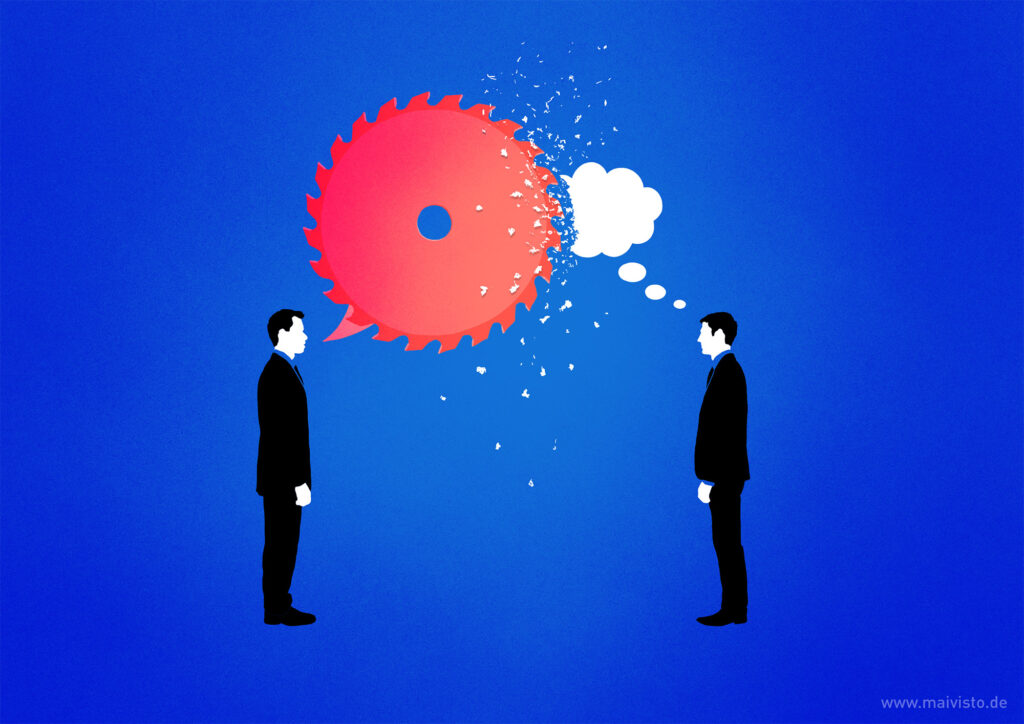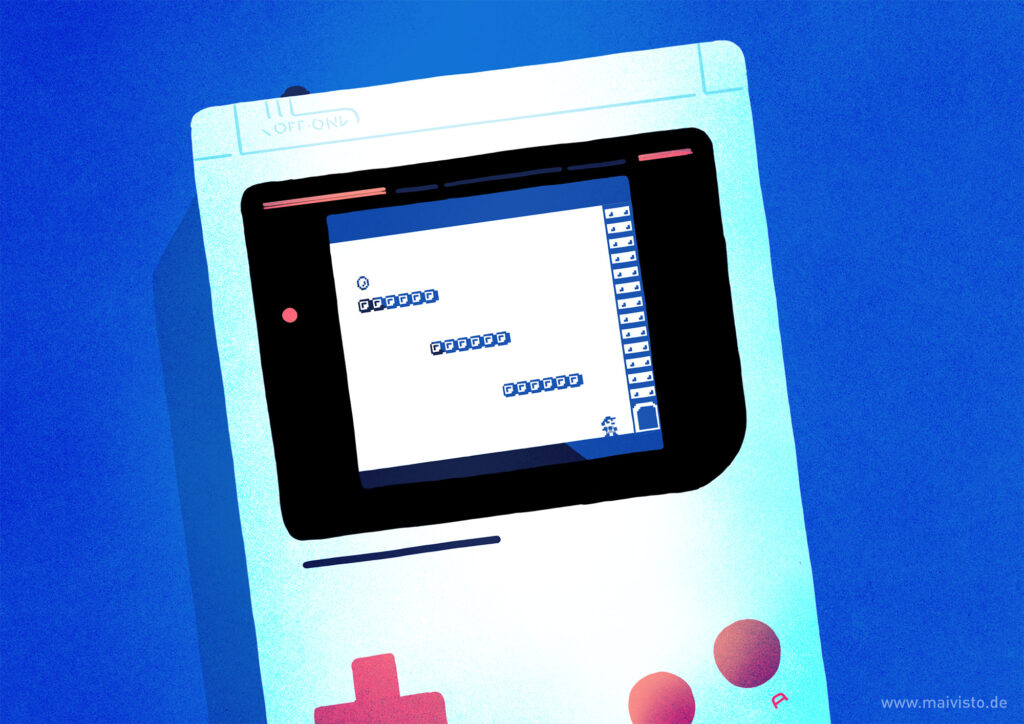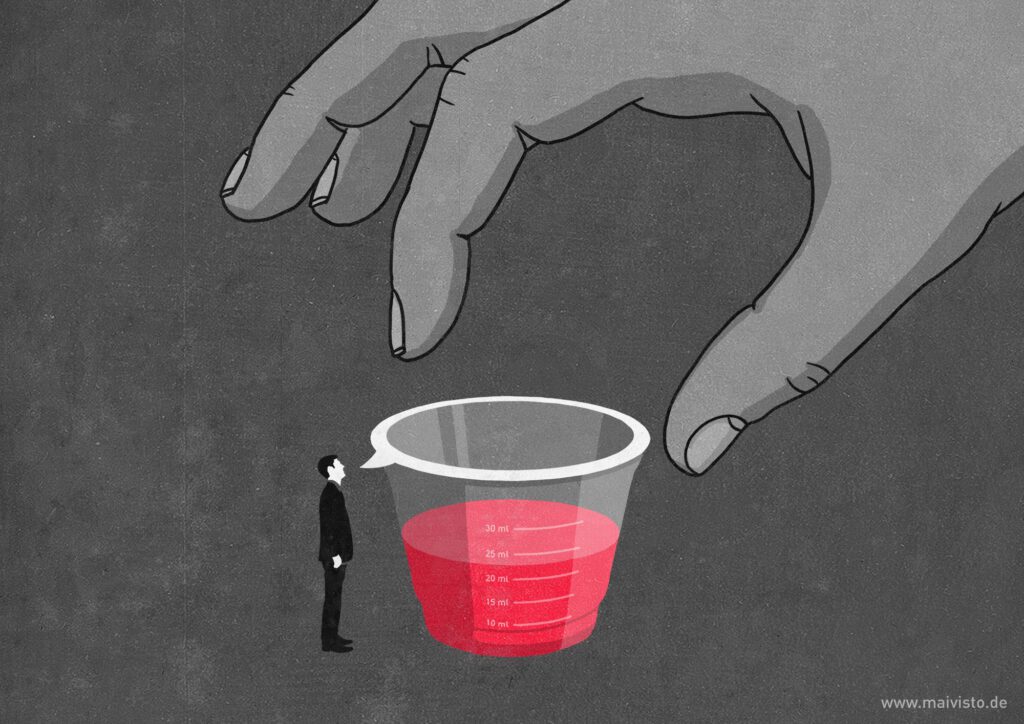How we stand in front of our audience immediately reflects how we feel: insecure, confident, nervous, on the verge of flight, or joyful anticipation. But more importantly, our stance and posture directly affect ourselves.
A secure and firm stance means that both feet are shoulder-width apart. This automatically means that the knees are pushed through, and the back is straight. Through this stand, completely different energy flows in our bodies. Our voice becomes minimally deeper, our gaze more concentrated. Shoes with a stiff sole can support this, as we are not as flexible wearing them as soft sneakers.
With the firm stand, we give our body and our head the signal: Now it gets serious! We go into communication mode. We are facing the audience head-on. Our total concentration belongs to them, and we start to talk consciously and thoughtfully about what we have planned.
No matter how the audience perceives us, sympathetic, arrogant, friendly, or hardened, there is one thing we do not appear to be: insecure.


